
Projector manufacturers invite teachers to get closer to the action—or at least the lesson plan—with short-throw projectors. As the product category implies, short-throw projectors are positioned closer to the screen than a traditional or standard-throw projector. That means they’re a better choice in tight quarters, but that’s not the only advantage these projectors provide for educational facilities.
[The Integration Guide to Education 2024]

"The traditional reason for a short-throw projector was to support interactive whiteboards," recalled Bob Wudeck, senior director of business development, BenQ North America. "In 2024, the primary reason for short-throw projectors is to enable a larger screen in a smaller space. Emerging markets like simulation, floor projection, and immersive rooms require short-throw projectors to enable larger images without having to mount the projector so far back that it is impractical."
Billy Harrison, product manager, mainstream video projectors, Optoma, agreed that short-throw models are great for space-constrained environments. “The number one reason short-throw projectors have grown in popularity is due to the big image they project from a short distance,” he said.

Another selling point is that short-throw projectors do not require special installation considerations beyond those needed for standard-throw projectors. According to Yann Sablayrolles, product manager projector, Panasonic Connect North America, short-throw units are generally easier to install and maintain.
"They can be mounted on ceilings, desktops, or carts—and can be placed closer to the display surface while still creating the same size image," he explained. "They offer greater installation flexibility with minimal cost increase and no sacrifice in performance or features. They are incredibly good space savers."
Educational Applications

Experts agree that short-throw projectors can be effective in classroom environments. From a practical standpoint, short-throw units can accommodate installations where there isn't enough distance to place a standard-throw projector or there are obstructions in the ceiling where the projector would typically be placed, according to Ryan Pitterle, senior project manager, projectors, Sharp. But there are other benefits as well.
“Generally speaking, when you’re in a smaller classroom where the professor and/or students will be moving around a lot within the classroom, short-throw projectors are the best option because they have specific features to reduce exhaust noise and unwanted distractions when students are seated close to the projector,” Sablayrolles said.
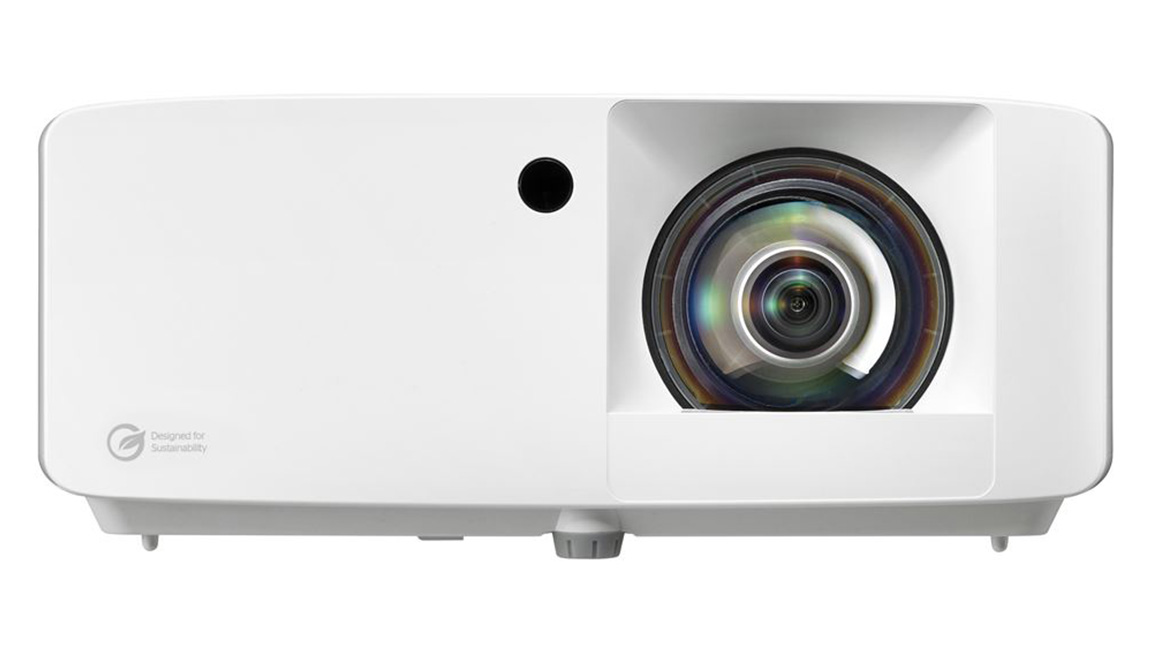
One of Optoma’s most compact Full HD short-throw projectors, the ZH450ST delivers up to a 120-inch image and is compatible with the Optoma Management Suite monitoring solution.
“Short-throw projectors require significantly less throw distance and are less prone to shadowing from participants in the room,” added Harrison. “When using standard-throw projectors, participants and viewers moving close to or in front of the projector can create a shadow, which is undesirable and distracting for others.”
“One key factor is installation volume, which refers to the total space needed to create an image of a certain size," explained Daniel Oey, senior IT product manager, LG Business Solutions. "Flat-panel displays and direct-view LEDs have a thin installation volume, as they are mounted directly to the display surface. However, standard-throw projectors will need a larger installation volume, as they need to be placed at a distance away from the display surface to create a larger image.
"While an older option, projectors are still a highly relevant member of a portfolio of display solutions. For larger images, projectors are often more cost-effective from an image size perspective," Oey continued. "Ultimately, short-throw projectors are a good choice for both classrooms and larger lecture halls, because they offer a good balance of smaller installation volume, image quality, brightness, and cost effectiveness."

Opinions on lecture hall use are more mixed. Mia Shen, senior business line manager, ViewSonic, said short-throw projectors "might not always be the best choice due to the limited throw distances and potential brightness limitations." Pitterle added that large lecture halls often require screens that are larger than the maximum size supported by most fixed lens short-throw projectors. But Wudeck said new 4K short-throw laser projectors are “especially well-suited to lecture halls, enabling 300-inch screens with Rec. 709 color accuracy that can replicate complicated organic colors in fine detail for science and art lecture halls.”
Lens Options
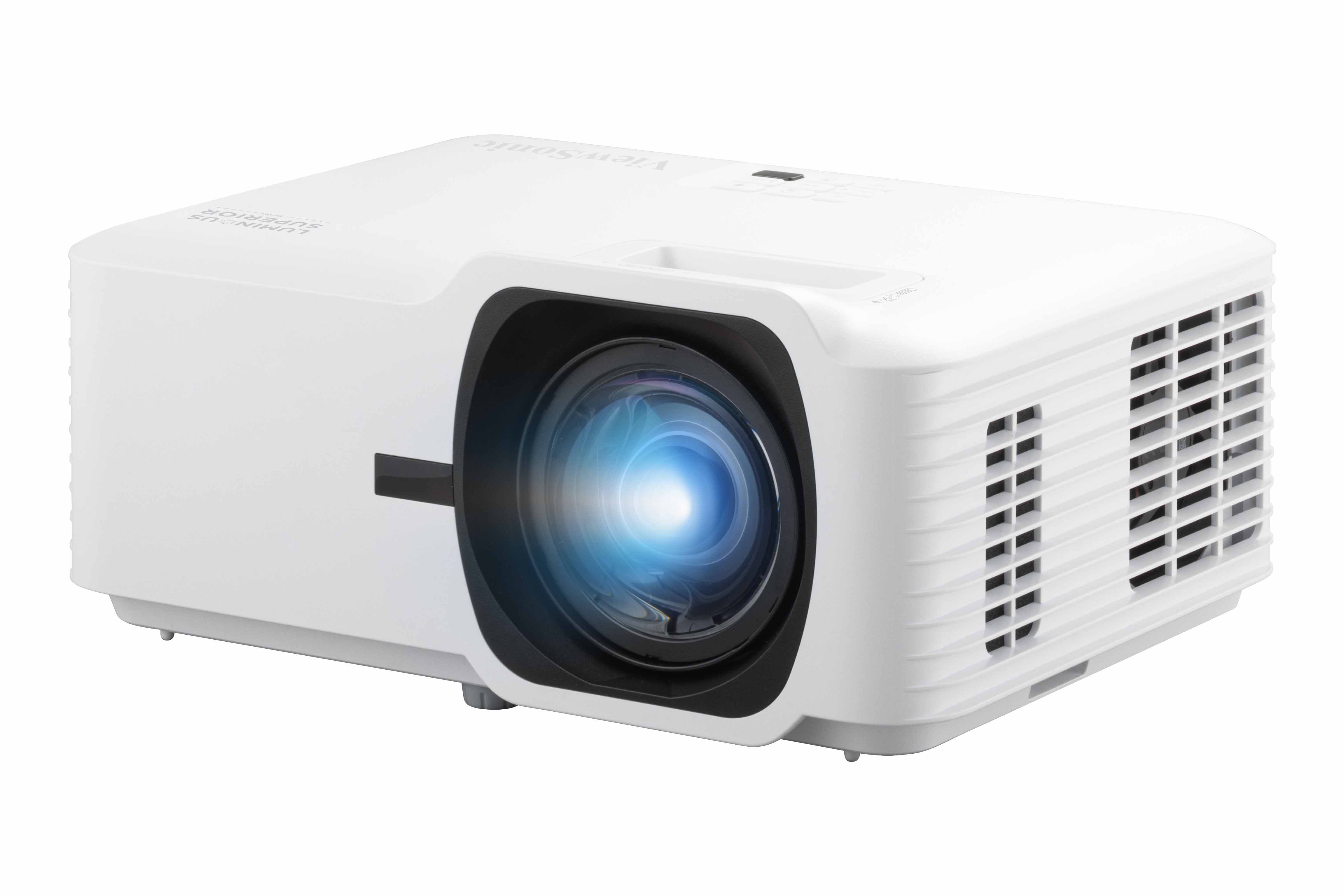
Part of ViewSonic’s Luminous Superior series, the LS711HD delivers 4,200 lumens and a lifespan of up to 30,000 hours.
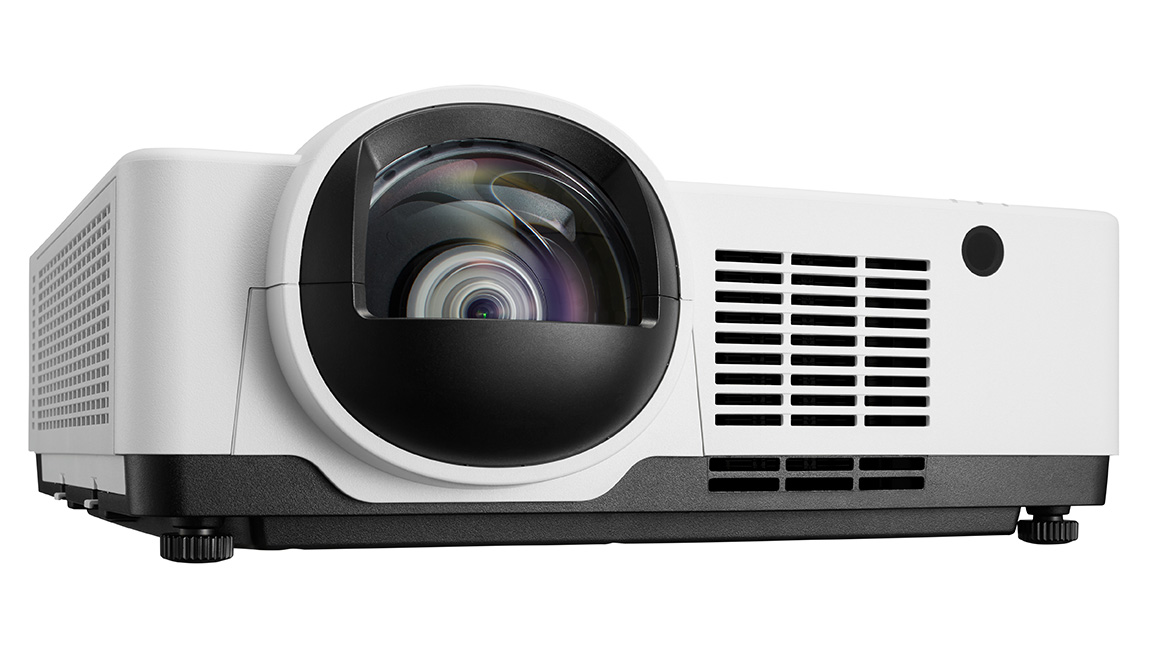
Sharp’s PE456UL Easy Installation Series LCD projector offers 4,500 lumens and WUXGA resolution for clear images in challenging applications.
Are there limits with lens choices? That depends on the projector model you choose. “Some short-throw projectors come with fixed lenses, which provide advantages in projector size and cost, while other projectors have the ability to change lenses for more flexibility, but typically results in a bigger and more expensive projector,” Oey said.
"While there’s a cost associated with interchanging lenses," Sablayrolles acknowledged, "this is a good option for those looking to use their projector in a variety of settings and applications."
Generally, Shen said short-throw projectors have fewer lens options compared to traditional projectors. If your short-throw projector has a fixed lens, Shen said there is less flexibility in adjusting the throw distance, which could be a limitation in larger or irregularly shaped rooms. Pitterle advised installers to pay attention to the throw ratio, which is the throw distance divided by screen width.
Projectors usually fall into three categories based on their throw ratio. While estimates vary between manufacturers, Oey said standard-throw projectors generally have a throw ratio greater than 1.0, while the throw ratio for short-throws is around 0.75-1.0 and ultra-short-throws have a throw ratio less than 0.5.


Wudeck differentiated between the three most popular types of short-throw projectors. "Home theater ultra-short-throw projectors are placed close to a wall and have integrated speakers, while immersive projectors for museums and simulation rooms are designed for very large images and blended together," he said. "The traditional classroom models typically have a maximum image size of 130 inches and are designed for whiteboards."
Yes, ultra-short-throw is another subcategory, with projectors that can be placed even closer to the screen, often from only a few inches, while providing a full-sized image. “The difference between short-throw and ultra-short-throw is the lens throw ratio and lens design,” Harrison explained. “Short-throw projectors use a standard front-of-the-projector lens that can be easily identified by the round protruding lens."
[Here's How Arizona Science Center Is Taking Visitors Under the Sea]
"Ultra-short-throw projectors can create large images from very short distances, resulting in a small installation volume and almost eliminating the possibility of shadows," Oey said. "They achieve this by using powerful aspherical lenses. However, as a result they are typically more expensive. Also, because they are placed close to the display surface, the projected image is sensitive to projector mount alignment and display surface flatness, which can cause image distortion."
Considerations and Limitations
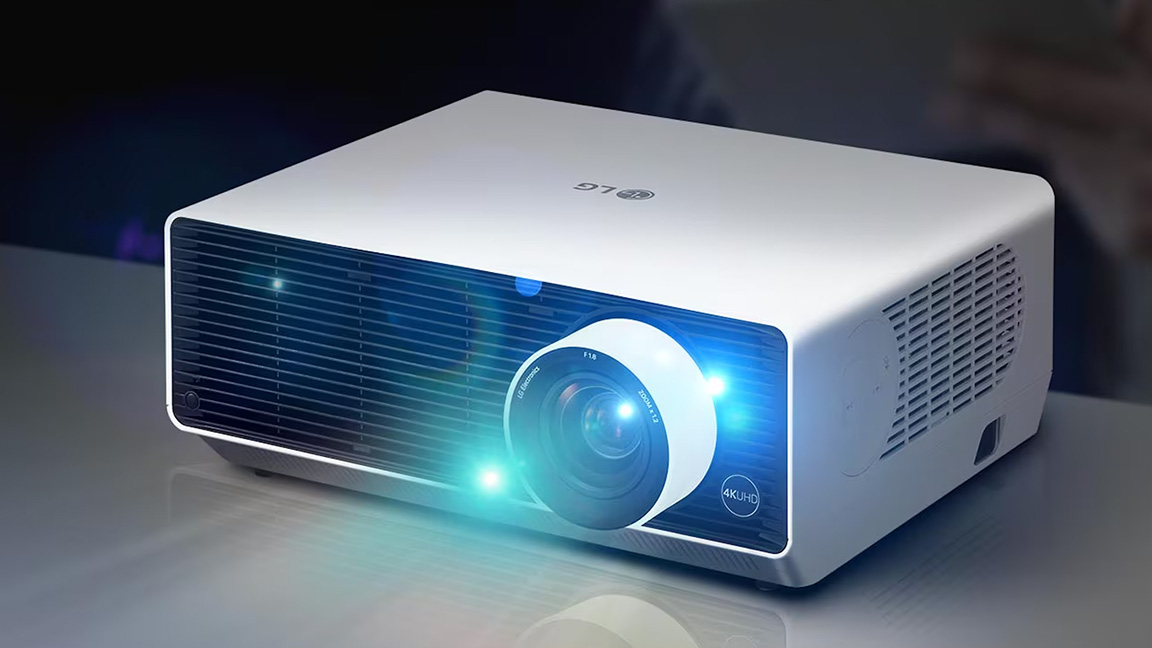
LG offers a compact 4K short-throw projector option with the ProBeam BU53RG, which delivers 5,000 lumens and advanced digital image adjustments.
Short-throw projectors do not require a special kind of screen, so standard drop-downs or fixed-frame models are just fine. And for a traditional classroom, Wudeck said you can use any screen or whiteboard made in the last 20 years. "For environments with high ambient lighting, a short throw projector can be used with an ALR [ambient light rejection] screen," Harrison advised. "ALR screens reject ambient light back into the environment, allowing for bright and crisp images even in bright rooms."
Any technology has its limits, and there are some disadvantages associated with short-throw projectors, staring with less installation flexibility. As Shen explained, the limited throw distance means these models are generally not suitable for very large rooms or lecture halls where the projector needs to be placed far from the screen.
[Sustainability: A Pro AV Progress Report]
Harrison also emphasized the need to mount or place the projector close to the projection surface. “For example, a mainstream short-throw projector like the ZH450ST can generate a 100-inch image with a throw distance of 3.6 feet and an even larger 120-inch image from a longer throw distance of 4.3 feet,” he explained. “Short-throw projectors cannot be used from the middle or the rear of the room, as the projector image size will be too large and have poor focus.”
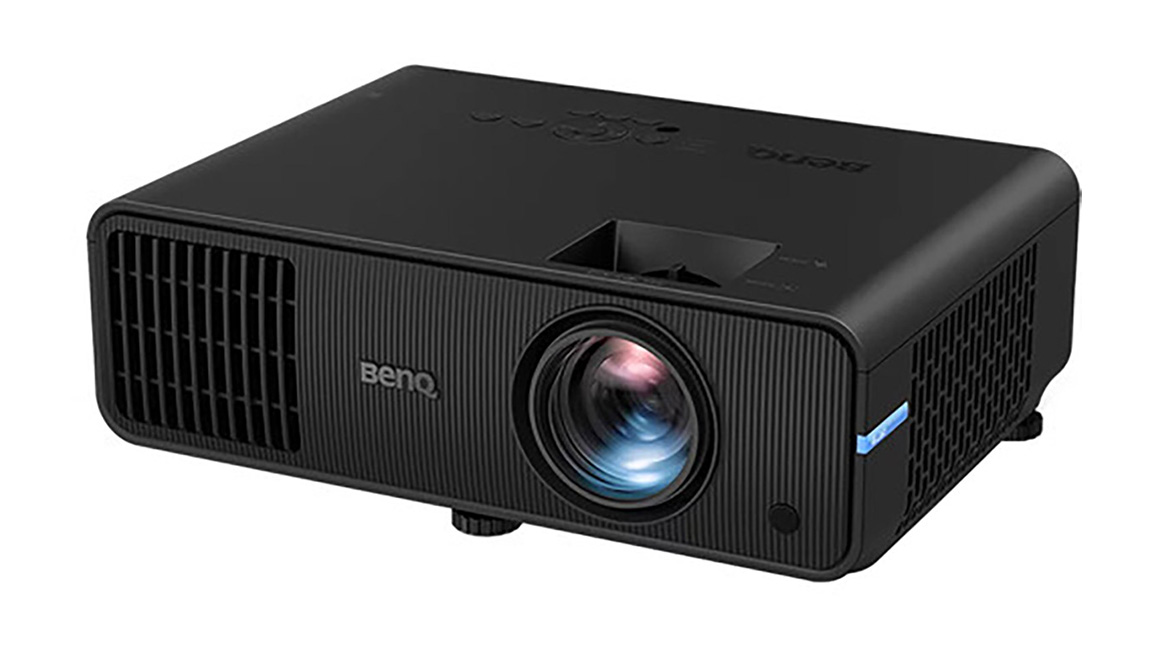
BenQ’s LH600ST offers 1080p resolution, 2,500-lumen brightness, built-in 10W speaker, selectable aspect ratio, and wireless Wi-Fi projection with an optional dongle.
In applications where large screens are needed, a short-throw projector may not suffice. "Traditional fixed lens, short-throw projectors sometimes have limitations to the maximum screen size supported,” Pitterle said. Go bigger than that limited image size and your image can lose focus on the edges, Wudeck added.
There is also the issue of no (or very limited) zoom capabilities. As Harrison observed, most Pro AV short-throw projectors with fixed or interchangeable lenses are limited to 1.15x zoom. “This is the nature of short-throw lens projectors overall and not a limitation of any particular projector company,” he noted.
[Get Excited About These New PTZs in 2024]
That lack of zoom means installation can also be challenging, due to the precision needed to square the image on the screen. As Wudeck noted, if your projector doesn't offer lens shift and/or zoom, your projector has to be mounted exactly right to properly fill the screen. "Most mounts will provide sufficient adjustment," Pitterle added, "but professional installation is still recommended."
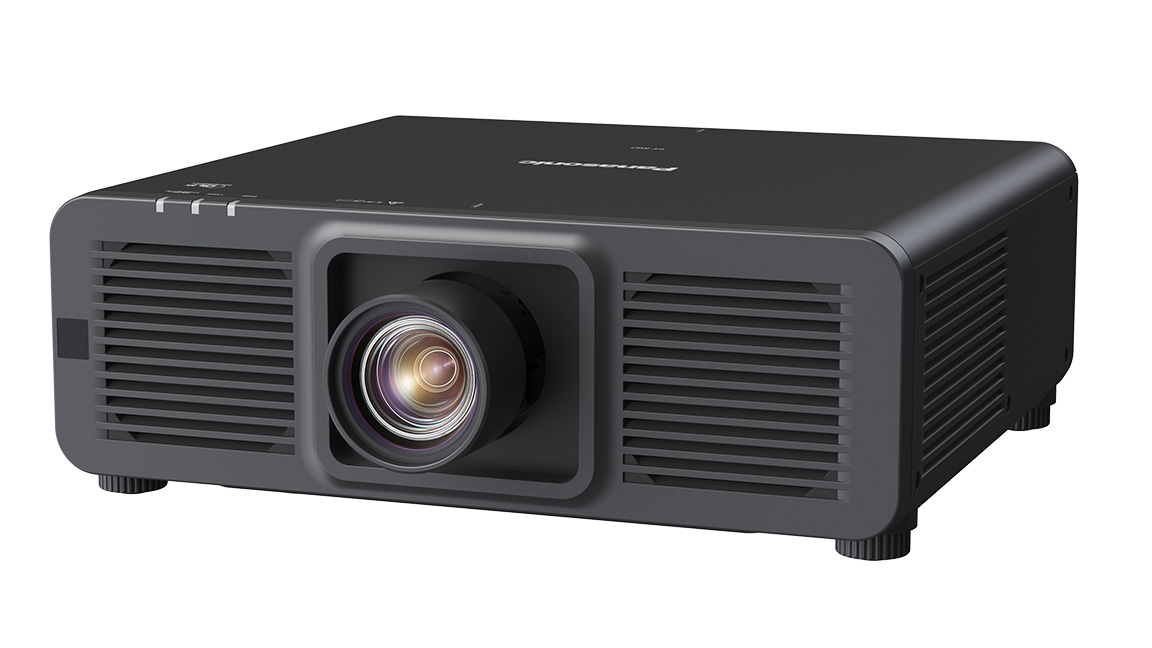
The 1-DLP Panasonic Connect PT-RQ7L delivers 4K resolution, 7,500 lumens, and up to a 400-inch image, depending on the lens.
Sablayrolles said a short-throw projector body can often be bigger and heavier than a traditional projector because of the size of the lens, and he also warned about potential sensitivity to screen imperfections. “It’s really important that you have a perfect screen or wall to project on,” he noted. “Since the projector is placed close to the screen, it is much easier to see imperfections/issues with a screen while using a short-throw projector.”
And, of course, there's cost. If you want that extra flexibility, expect to pay for the convenience. "Short-throw projectors are often more expensive than traditional projectors with similar specifications," Shen confirmed.
Check Your Distance
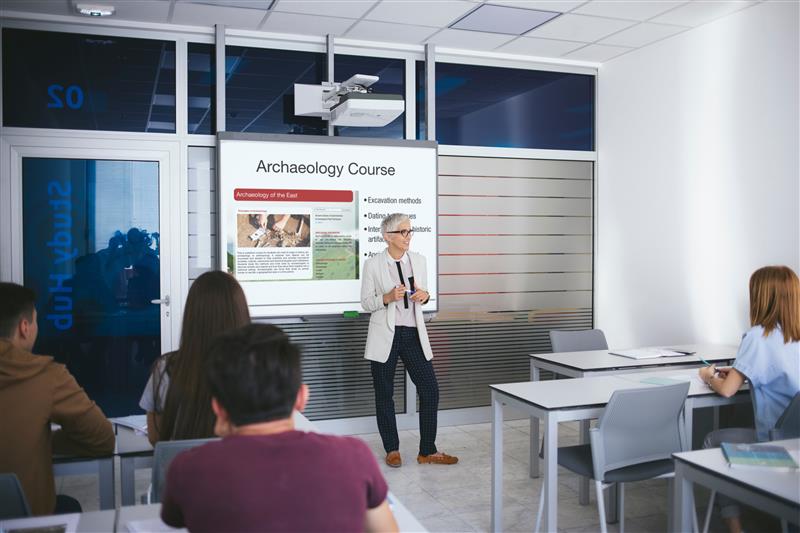
Ready to install your short-throw projector? According to Sharp's Ryan Pitterle, you can mount it to the ceiling using a standard ceiling mount or with a wall mount attached just above the screen. For a less permanent solution, you can place it close to the screen on a pedestal or table. Some manufacturers even offer custom mobile projector carts, such as the Epson ELPCS01, which is designed exclusively for its PowerLite 810E/815E 3LCD short-throw projectors.
If you need help to determine the best configuration of the room and projector placement, there are several online tools that can help. For example, Panasonic Connect offers a Throw Distance Calculator and Optoma has its own Projection Calculator. Both sites let you calculate projected image size, projection distance, and more based on specific models and lenses.







